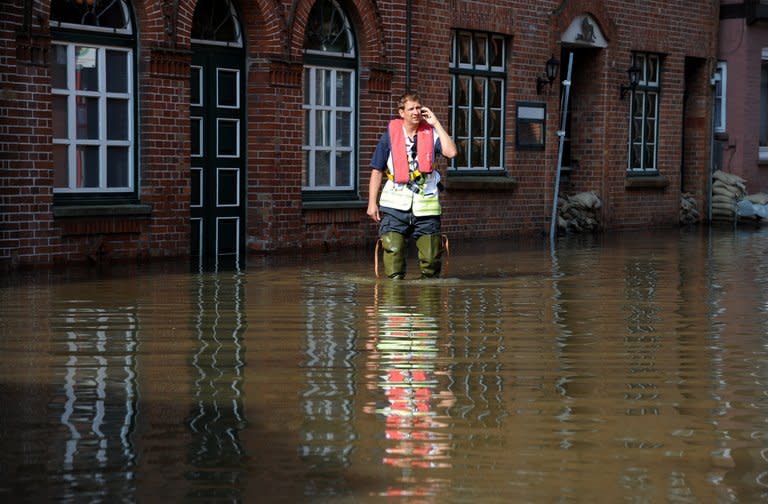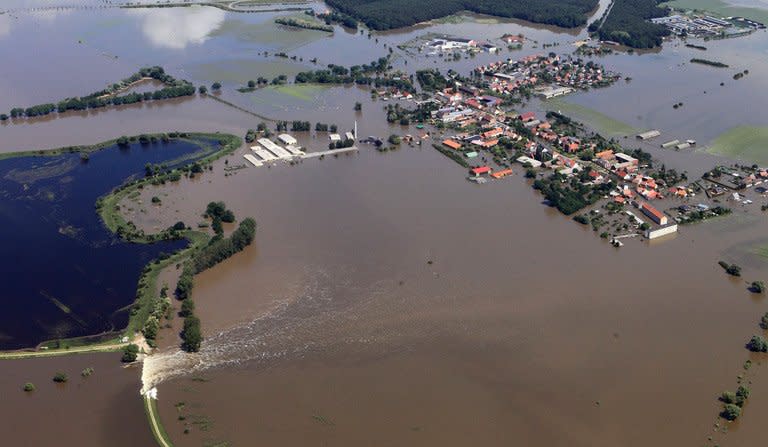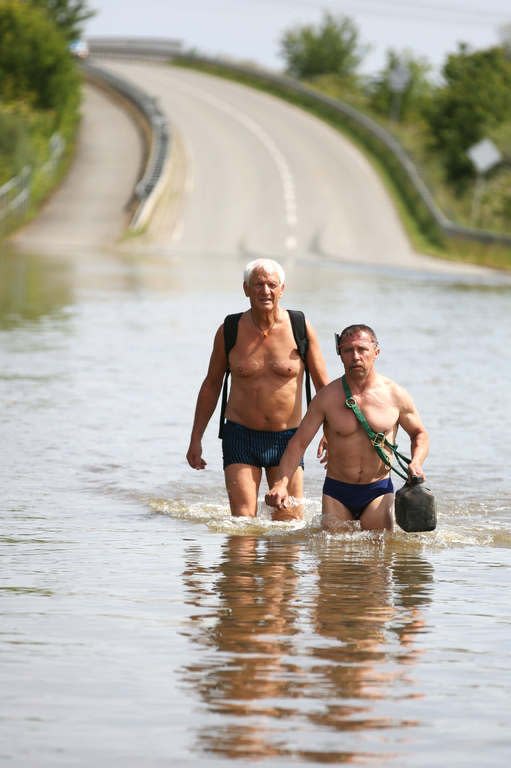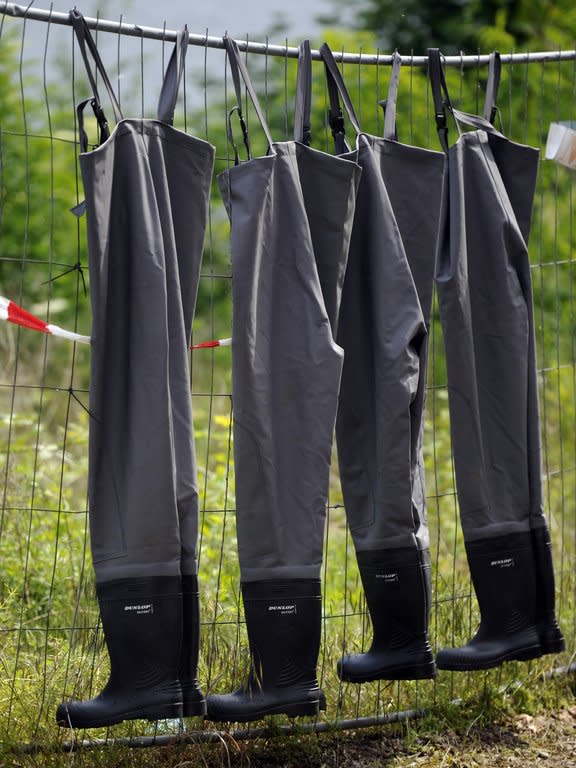Germany begins to count cost as floods surge north
Deadly floods forging a path of devastation through central Europe for more than a week bore down on northern Germany Tuesday as new estimates emerged on the cost of the damage. Swollen rivers in the German states of Saxony-Anhalt and Schleswig-Holstein posed the biggest threat, after flood waters that left at least 19 people dead across Europe. Europe's top economic power has published no official figure on the cost of the deluge but a private ratings agency said the figure could surpass 12 billion euros ($16 billion) in Germany alone. The German Agricultural Association said sodden fields, destroyed crops and damaged equipment brought losses of 405 million euros, according to a preliminary estimate published Tuesday. Around 305,000 hectares (750,000 acres) of fertile farmland were submerged as the floodwaters worked their way north, with Saxony-Anhalt in the centre of the country seeing about one-third of the total damage. Some 9,000 soldiers were deployed in Saxony-Anhalt Tuesday to ensure dykes held as around 11,300 people remained stranded in provisional housing. In Schleswig-Holstein in the north, fears focused on the town of Lauenburg, 40 kilometres (25 miles) southeast of Hamburg, where the Elbe was expected to peak on Thursday. There the river has already reached a level of 9.56 metres (31.36 feet), more than double the normal. The old quarter of the town had its power cut and some 400 people had to seek higher ground. Downriver the Elbe stabilised as towns and cities remained in a state of alert, particularly in Magdeburg, the capital of Saxony-Anhalt, where more than 20,000 have had to seek emergency shelter. Hungarians meanwhile breathed a sigh of relief as the level of the Danube continued to fall to 8.45 metres on Tuesday from 8.81 metres late Monday. Travel restrictions in Budapest were expected to remain in place for another week but a key bridge linking Hungary to Slovakia reopened to traffic. Prime Minister Viktor Orban said his ministers would begin calculating the cost of the damage and hammering out a reconstruction plan. "We still have a day and a half or two tough days ahead of us," he said. "That is why we need to focus our efforts and attention at this time." Economy Minister Philipp Roesler said Tuesday the government would establish an aid fund for stricken residents and businesses using a model established after "worst-in-a-century" floods in 2002. "That was a success," he told Berlin's Inforadio, saying the amount of the new fund would be determined after the floods had passed and the cost of the damage had been tallied. Ratings agency Fitch said the latest deluge could be more costly than the 2002 catastrophe, forecasting 12 billion euros in damage in Germany alone, of which up to three billion euros would be covered by insurance policies. The German Economic Institute (DIW) estimated in the middle of last week that the floods had already done six billion euros in damage. Chancellor Angela Merkel, who is just over three months away from a general election and last week pledged 100 million euros in immediate aid, is to meet Germany's 16 state leaders on Thursday to discuss recovery efforts. Meanwhile a staple of the German diet, the potato, looked to be another victim of the flooding as the fruit and vegetable industry association (BOGK) warned that a meagre harvest could drive up prices. "It is not unlikely that there could be a shortage of French fries, dumplings and chips," BOGK managing director Horst-Peter Karos told the daily Bild. Officials in Bavaria, which experienced the worst of the flooding last week, said the brown waters had wiped out around 60 percent of the vegetable harvest. And in Saxony, where the Elbe burst its banks last week, 30,000 hectares used for grazing and 45,000 hectares of cultivated land were inundated to an extent where "nothing could be saved", Andreas Jahnel of the region's agricultural federation said. "The fields were under water for four or five days -- everything is rotten," he said, adding that the only hope was that some of the harvest could be salvaged to produce biogas.





